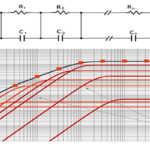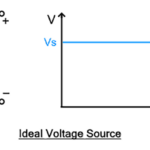Coil shapes have played a profound role in the performance of wireless power transfer, especially with the coupling coefficient, output power, and energy transmission. We will examine how square, circular, and pentagonal coils have fared against each other. While there are many more shapes, these three form the basis of other shapes and, therefore, require […]
FAQ
Bipolar junction transistors show their muscle
Recent enhancements to the classic BJT show that the classic transistor has plenty of life left and can challenge SiC and GaN devices in some power applications. Amidst the advances in CMOS and wide bandgap semiconductor technology, you can easily forget that the first transistor invented by William Shockley in 1949 was a bipolar junction […]
FAQ on X- and Y-capacitors
X-capacitors and Y-capacitor placements are needed for performance and mandated for safety in most AC-line systems. What are X-capacitors and Y-capacitors? No, they are not references to various circuitry-related algebra problems that need to be solved, nor are they the tools of superheroes. Instead, they are AC-line capacitors mandated by good design practice and regulatory […]
FAQ on voltage and current sources: part 3
Voltage and lesser-known current sources provide important IC, circuit, and system functions. This section continues the discussion of current sources and related topics. Q: How do you construct a better current source than a voltage source and a resistor? A: There are several ways, but the most common is, ironically, to start with a voltage […]
FAQ on voltage and current sources: part 2
Voltage and the lesser-known current sources provide important IC, circuit, and system functions. Current sources We have examined voltage sources, and now we can examine their less-known but necessary complement, the current source. Q: What is a current source? A: As the name implies, the current source is like a voltage source but different. It […]
FAQ on voltage and current sources: part 1
Voltage and the lesser-known current sources provide critical IC, circuit, and system functions. Voltage sources and their complement to current sources are essential elements of many systems, circuits, and IC designs. Experimenters and novice engineers are familiar with voltage sources of various types — even if not by that name — in the form of […]
FAQ on pull-up/pull-down resistors: part 2
Even this relatively simple circuit arrangement has subtleties that affect performance. Part 1 explored the role of pull-up and pull-down resistors to ensure that the binary (digital) circuit points are at an unambiguous 1 or 0 level. This part explores basic issues of sourcing, sinking current, and resistor sizing. Sourcing and sinking current Q: What […]
FAQ on pull-up/pull-down resistors: part 1
Even this relatively simple circuit arrangement has subtleties that affect performance. In the crisp, clean, theoretical binary world, signals exist in only two unambiguous states, generally called 1 and 0 (one and zero). However, when engineering students, hobbyists, and digital-only professionals get into the hands-on real world of circuits and systems, they find that binary […]
Selection and implementation of BLDC control strategy
By Shao Zhang, Qorvo Understanding the differences between trapezoidal, sinusoidal, and field-oriented control can help engineers understand the value of Field Oriented Control (FOC) and the choices available to optimize their designs. BLDC motors can be smaller, lighter, and quieter than traditional brushed DC motors while enhancing the reliability and energy efficiency of consumer, industrial, […]
How do SiC and GaN devices age?
By Peter Friedrichs, Infineon Technologies SiC and GaN devices operate at higher stress levels than silicon devices. The semiconductor and automotive industries have strict qualification tests for that. Silicon carbide (SiC) and gallium nitride (GaN) wide bandgap (WBG) technologies are well known for their performance advantages over silicon (Si) in many high-power areas, including their […]











